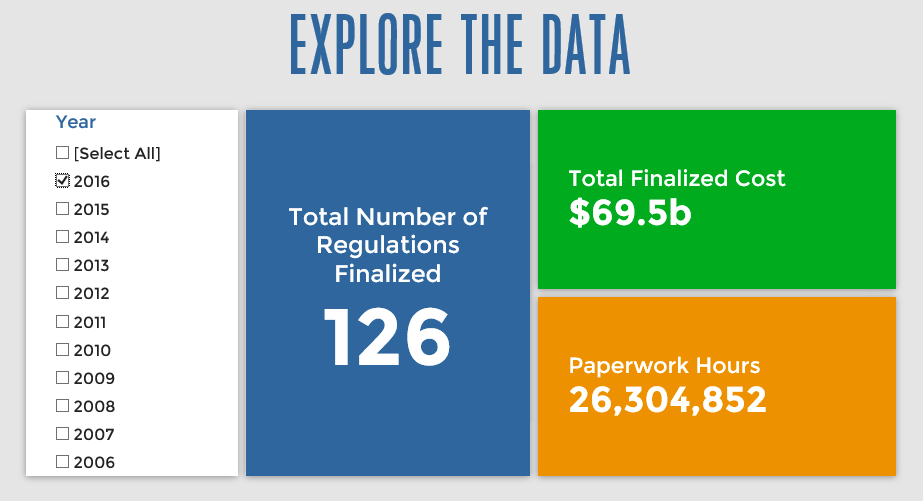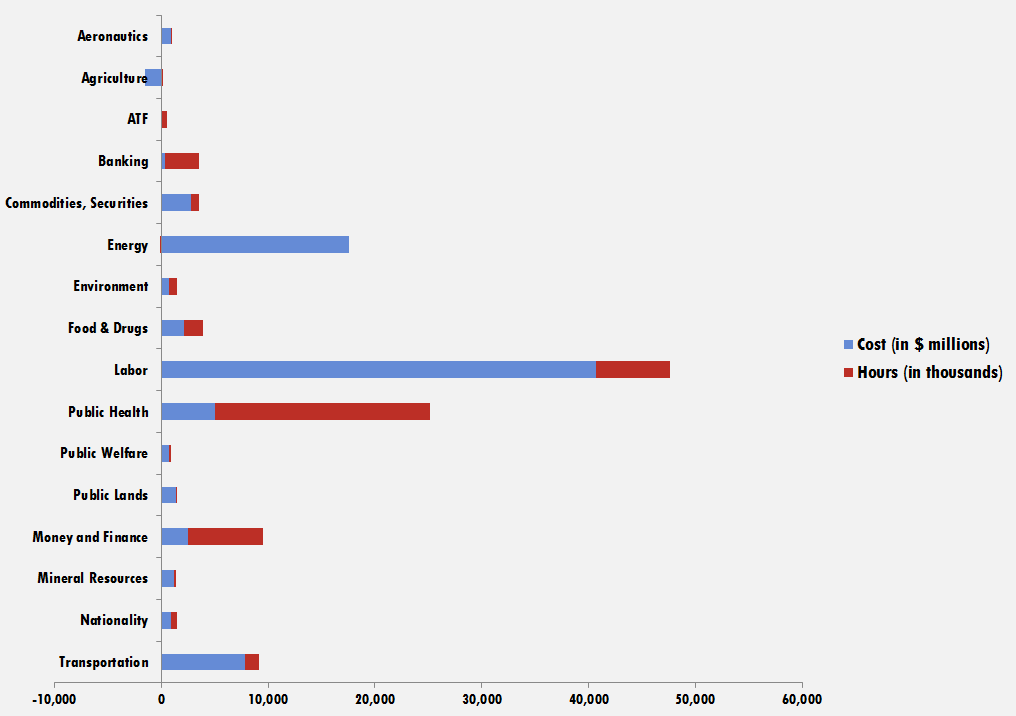Week in Regulation
May 16, 2016
$6.2 Billion in Costs
With “Regulation Day” looming in the near future, a time when the next administration and Congress could review President Obama’s Lame Duck rules, the administration imposed $6.2 billion in total costs from 20 different regulations. Annualized burdens were $947 million, with no monetized benefits, and 12.8 million paperwork burden hours. Surprisingly, the administration also proposed a deregulatory measure to cut $112 million in costs. The per capita regulatory burden for 2016 is $266.
Regulatory Toplines
- New Proposed Rules: 60
- New Final Rules: 58
- 2016 Total Pages of Regulation: 30,156
- 2016 Final Rules: $69.5 Billion
- 2016 Proposed Rules: $16.5 Billion
The American Action Forum (AAF) has catalogued regulations according to their codification in the Code of Federal Regulations (CFR). The CFR is organized into 50 titles, with each title corresponding to an industry or part of government. This snapshot will help to determine which sectors of the economy receive the highest number of regulatory actions.
The administration regulated pretty much everything this week. Five measures imposed annual costs of more than $100 million, with an incredible 12 million in associated paperwork burden hours. For perspective, it would take more than 6,000 employees working full-time to complete that paperwork.
The leader this week was a final rule from Treasury, “Customer Due Diligence Requirements for Financial Institutions.” The measure implements part of the “Bank Secrecy Act” and is designed to identify and verify the identity of all customers once an account is opened. Costs could reach $2.5 billion, with seven million additional paperwork hours.
This week, the FDA formally issued its “E-Cigarette” rule, along with other provisions for tobacco. AAF covered the rule here. It would impose $1.1 billion in long-term costs and add more than 1.6 million paperwork burden hours.
Affordable Care Act
Under Medicare, the administration proposed a “Merit-Based Incentive Payment System (MIPS).” The regulation consolidates three existing programs and focuses on quality, efficiency, and avoiding redundancies. It would impose $127 million in costs and 2.5 million paperwork burden hours.
Since passage, based on total lifetime costs of the regulations, the Affordable Care Act has imposed costs of $47.6 billion in final state and private-sector burdens and 170.6 million annual paperwork hours.
Dodd-Frank
The Securities and Exchange Commission (SEC) finalized a 2011 proposed rule for “Business Conduct Standards for Security-Based Swap Dealers.” The enormous 193-page final rule contains a complex benefit-cost analysis that reveals more than $700 million in economic burdens and 800,000 paperwork hours.
Click here to view the total estimated revised costs from Dodd-Frank; since passage, the legislation has produced more than 73.9 million final paperwork burden hours and imposed $36.2 billion in direct compliance costs.
Total Burdens
Since January 1, the federal government has published $86 billion in compliance costs ($69.5 billion in final rules) and has imposed 45.2 million in net paperwork burden hours (26.3 million from final rules). Click below for the latest Reg Rodeo findings.












